
Complete E-commerce Marketing Guideline for 2025 [16+ Strategies]
SHARE :



After hoards of trouble, our friend John finally launched his e-commerce website.
The site’s design was cool, and he uploaded his products. Then, he decided not to focus on e-commerce marketing and thought people would automatically visit his website and buy.
But no one came. Don’t be like John.
Okay, jokes apart. E-commerce is a hyper-competitive marketplace. It’s becoming harder to impress your audience when there are plenty of alternatives available.
Without proper guidelines and strategies for e-commerce marketing, you will be pushed off the game before it even starts. But don’t worry—we won’t let that happen.
In this article, we will discuss e-commerce marketing in detail and introduce you to 20 strategies that will put your business ahead of this game.
Let’s start, then.
What is the e-commerce marketing?
E-commerce marketing combines strategies, activities, and good practices to drive more traffic to your online store and convert visitors into retaining customers.
An effective marketing plan for your e-commerce store aims to influence the entire customer journey positively and in your favour, of course.
That starts with making people aware of your brand, earning their trust, and ending with a successful checkout. And ensuring they come back again whenever they need a similar product or service.
Types of e-commerce marketing
“Know thyself. Know thy enemy. A thousand battles, a thousand victories.”- a wise Chinese philosopher once said.
To be honest, doing online business these days is no less than war.
So, before making an e-commerce marketing plan to help you win, you must be clear about some basics.
Let’s start with different types of e-commerce marketing channels, their potential, and use cases.
1. Content marketing
We can hear you ask, “Are you guys talking about writing blogs and stuff?”
Yes, we are.
Blogs and articles are classic forms of digital e-commerce marketing that are more relevant today than ever. However, content marketing is more than writing blogs or articles.
It refers to creating and promoting various forms of content, including videos, email newsletters, podcasts, infographics, magazines, courses, webinars, and social media posts.
Content marketing establishes your authority as an expert in your niche, creates brand awareness, and helps you rank higher in search engine result pages.
2. Email marketing
Email marketing has remained one of the oldest e-commerce strategies, with an impressive ROI of $36 on every $1 spent.
Promotional newsletters, product updates, discounts, pre-purchase follow-ups, user manuals, cart abandonment, and sales announcements are the most common email marketing formats.

The best part about emails as a digital e-commerce marketing strategy is that you can fully automate the entire process of your campaigns.
You can segment your email subscribers based on demography, behaviour, or engaging factors and automate the campaign sequences. Then, you can sit back and watch the show.
3. Affiliate marketing
Did you know that 81% of brands launch affiliate marketing programs as part of their core e-commerce marketing strategy?
Affiliate marketing refers to when any business, company, or marketer known as an affiliate promotes or sells products on your behalf through their channels and earns a commission in return.
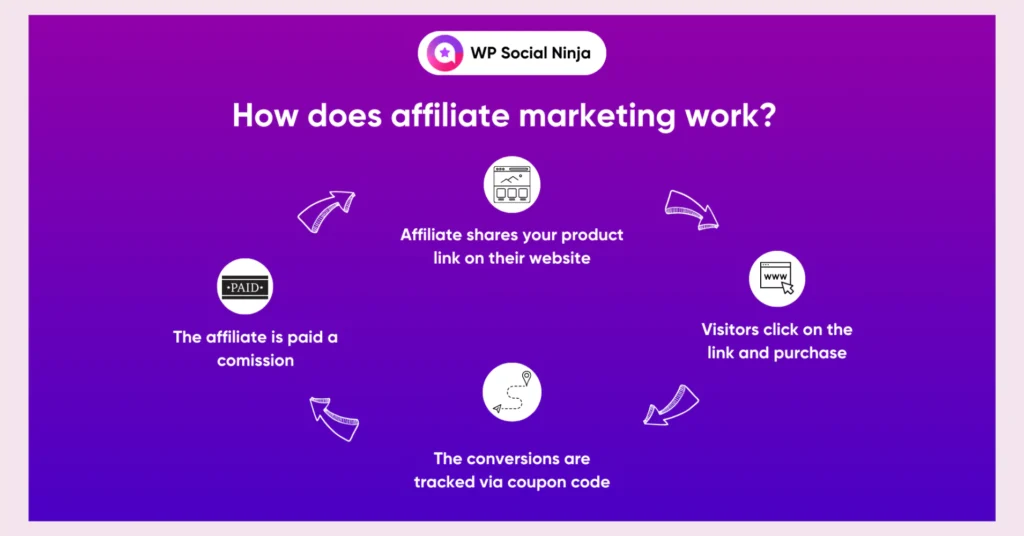
Affiliates often showcase your products on their landing pages to generate traffic via content marketing, paid advertising, emails, or other means.
The concept is like building a temporary community of marketers for your brand. Affiliate marketing is a classic example of a digital e-commerce marketing strategy that will hold its charm for many upcoming years.
Affiliate marketing is a partnership-based marketing model where affiliates
4. Influencer marketing
Our friend Alex became an astrologer and said investing in influencer marketing would be wise.
Okay, no jokes.
Influencers are people with many social media followers.
They are really good at understanding the algorithm of their relevant platforms and building communities where followers like and trust them.
The idea of influencer marketing is to collaborate with a celebrity or trendsetter who either acts as a brand ambassador or mentions your brand or products in their content.
Influencers are skilled in creating high-quality and engaging content for your brand according to the likings of their audience.
That’s why people trust influencers more when they say something about a brand than when the brand talks about themselves.
5. Content publication network (CPN)
Content publication network refers to cross-promoting your content, which is published and distributed on multiple channels to reach a wider audience.
As for e-commerce marketing, CPN includes multi-platform content syndication- repurposing your blogs or infographics on platforms like LinkedIn, Medium, and social media channels like Facebook, Instagram, Twitter, Youtube, Reddit, and Quora to attract diversified audiences.
Let’s clear up about one thing. CPN is not randomly sharing your content on different platforms. It requires a strategic approach to your content distribution according to the nature of the platforms.
For instance, you might adjust blog headings and visuals for Medium or LinkedIn, create carousel posts for Instagram, or develop short video clips for YouTube.
6. Referral marketing
Referral marketing is a form of e-commerce advertising where an existing customer recommends a product or service to others and earns a commission in return.
This simple marketing approach is highly effective for boosting sales, nurturing brand loyalty, and driving organic business growth.
Unlike traditional word-of-mouth marketing, referral marketing involves rewarding customers who make successful referrals. The company makes a sale, the referrer earns a commission, and the new buyer gets your amazing product or service—everybody wins.
The positive impact of this e-commerce marketing tactic is so reliable that big companies like Google or Tesla often run referral programs for their products.
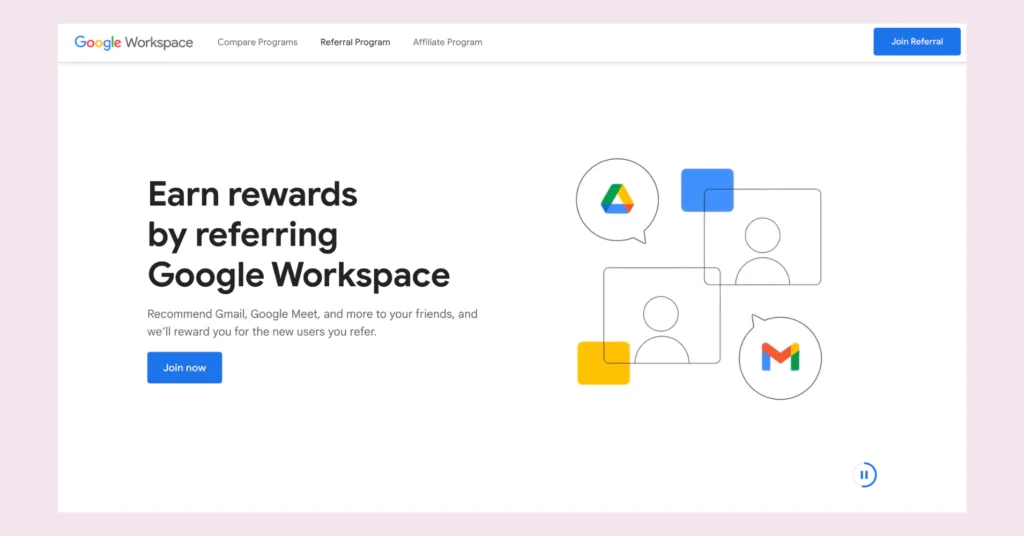
7. Mobile marketing
Smartphone users account for around 77% of global e-commerce web traffic, generating 66% of total online orders.
At this point, it’s needless to say that you must include mobile marketing in your e-commerce advertising plan if you wish to go anywhere near success. It’s that important.
Mobile marketing approaches involve sending personalized SMS and optimizing your e-commerce website and email newsletter to be mobile-responsive. To give your efforts a finishing touch, you can consider building a mobile app for your business.
A well-executed mobile marketing strategy boosts sales and builds long-term relationships with customers by creating a deeper, more personal connection like no other channel.
8. Conversion rate optimization (CRO)
CRO is a collective approach to e-commerce marketing best practices that increase specific actions in your traffic.
Generating large amounts of traffic for your e-commerce website is half battle-winning. For the other half, you need to convert them to customers. Let’s face it- the latter part is quite tough.
Here comes the CRO to the rescue. CRO is about fine-tuning your website and crafting marketing approaches where every interaction matters. It ensures that your business has the maximum potential for attracting new customers.
An effective CRO strategy includes user research, data analysis, web experience improvements, conversion funnel analysis, and almost everything related to smoother user experience.
9. Personalized marketing
Personalized marketing is an analytical e-commerce marketing approach that makes every promotional message and business experience unique to each customer.
It’s not like simply adding “Hey John” to your email. It’s about reaching out to every John out there at the right moment with the right suggestions.
It’s a data-driven strategy, and you need to think empathetically and craft content that generates more leads and gives your business a human touch.
Personalized marketing can involve avoiding flashy or annoying popups, cookie consent, and survey forms, and offering free e-books based on buyer personas, among other things.
10. Social media marketing
Social media platforms have 5.17 billion users, which is 63.7 per cent of the total global population- a utopia for your e-commerce website marketing.
If marketing is all about taking your product to the right people at the right time, the importance of social handles is not something you should undermine.
Your ideal audience is likely to be looking for you on social media. The nature of social media platforms and e-commerce websites makes them ideal matches for cross-marketing.
With the appropriate social media marketing goals, you can connect and communicate with your audience better, generate quality leads, and drive more traffic to your website.
That’s why global brands are now more active on their social handles. Let’s take this Instagram post from Louis Vuitton, for example.
11. Google/Meta advertising
If your brand needs more push after implementing all the organic e-commerce marketing channels, consider running paid advertisements on platforms like Google or Meta.
Paid advertisements can offer higher brand visibility and awareness to a particular and selective audience with strategic ad campaigns.
Google or PPC(Pay-per-click) ads involve bidding on specific keywords or phrases. Your ad will appear in the top search results when a user searches for those particular keywords with a Sponsored tag.
If they click on the ad, you’ll be charged a fee.
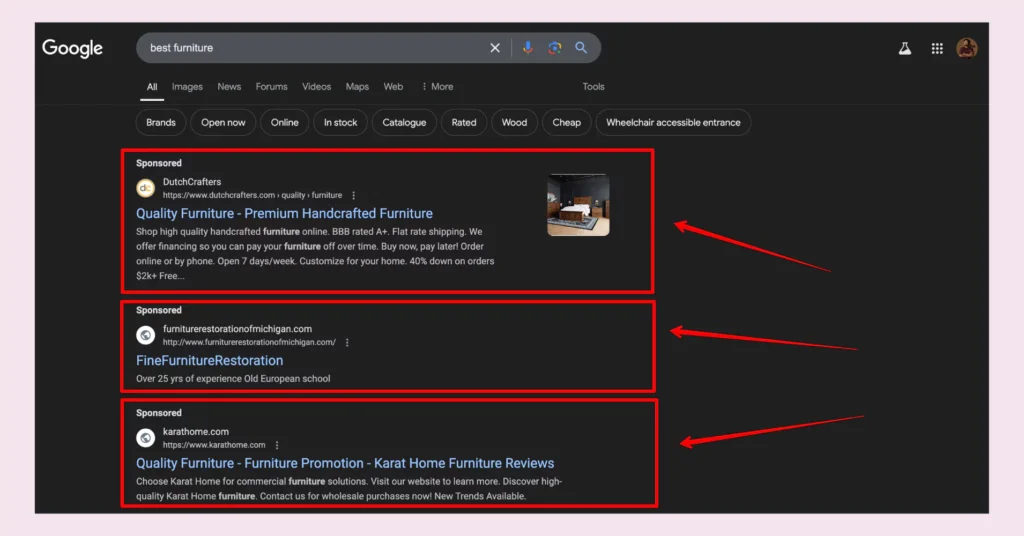
Meta ads (Facebook and Instagram ads) are visual-focused and ideal for raising brand awareness and product discovery. Many users may not need your product right now, but they are open to new discoveries.
Organic e-commerce marketing channels often take longer periods of time to deliver your expected result. However, paid advertisements can boost your brand visibility within a shorter time range.
16 e-commerce marketing strategies to boost your sales
By now, we’ve talked about different types of e-commerce marketing, their associated channels, and relevant information.
However, knowing them is no point unless you can master how to take advantage of them. Yes, we’re talking about strategies and e-commerce marketing best practices that will produce actual results.
This section will introduce you to 16 proven e-commerce marketing strategies for boosting your sales and conversion rate and turning your business into a brand.
No more chit-chat. Let’s start.
1. Set a clear business goal and defining KPIs
First things first, you can not start building e-commerce marketing plans unless you know what you want to achieve with them.
So, what do you want from your brand now? Do you want to increase your revenue, or enhance market share, or promote a new product, or something else?
You must figure out the answers to these questions first, write them on a piece of paper or wherever you want, and be clear about your goals.
Then, you need to set some numerical parameters to assess how well your e-commerce strategies are performing and what adjustments you need to make.
These parameters are called KPI, aka Key Performance Indicator. Let’s clear things up with an example.
You want to boost your e-commerce website traffic by 20%. That’s your goal. You make some strategies to do that.
Now, you regularly monitor unique website visitors, organic traffic, page views, bounce rates, etc. These data are your KPI. They clearly show you whether you are on the right path or need to make changes.
Goals give your e-commerce advertising meaning, purpose, and direction, while KPIs show progress- the most influential duo in the business world.
2. Create an ideal buyer persona
A successful e-commerce marketing strategy starts with knowing the audience. E-commerce can be quite tricky when you don’t meet real people every day like in a conventional store.
That’s why you must create an ideal buyer persona to understand how to sell to them. So, what does it mean? What’s the game here?
Building a buyer persona means imagining a person who will buy from you and gathering some information about him/her—such as what that person looks like, where he/she resides, and what his/her gender is.
Then, you need to figure out why they should choose you over your competitors, what their pain points are, how your product/service can solve them, how you can generate value in their lives, and other such things.
When you have all the information, you can tailor a personalized e-commerce marketing strategy that fits their needs the most. They get what they want, and you make money—that’s the idea here.
For example, you sell customized printed T-shirts, and your ideal buyer persona is a college student, roughly 18-22 years old. Most of them live near the college areas, and they’re not likely to spend a fortune on a T-shirt.
Now, you start to make a super plan with this information. First, you print some sample T-shirts with trendy designs, then you offer free deliveries in your targeted areas, and as a cherry on top, you throw discounts.
Look at the strategy you built. It’s affordable, trendy, and fashionable—it perfectly fits your buyer persona criteria.

3. Optimize your website for SEO and user experience
Let’s start with understanding search engine optimization (SEO) first.
SEO is an organic process that involves understanding Google’s search algorithm and making your web pages, blogs, and products more visible to search engines.
Pages ranked first in Google will likely get ten times more clicks than those ranked 10th in the organic search results. People coming through Google search are very specific audiences likely to be converted.
Optimizing your website for SEO involves three major steps: keyword research and analysis, content creation and web page copy optimization, and technical improvement.
Proper keyword research reveals what your target customers are looking for and their pain points, allowing you to craft value-generative content for them.
Here are some tips for keyword research:
- Try to think from your customer’s point of view. What words or phrases might they use for Google search? How would you do that if you were in their shoes? Make a list based on them.
- Take a sneak peek at your competitors. Find out what keywords they are using and how well they are performing. See what works for them and what does not. This will save a lot of time.
- Choose keyword research tools like Ahrefs or Semrush to assess important metrics like keyword difficulty, volume, search intent, CPC value, and their parent topic.
The next step is content creation and web page copy optimization. Crafting content and webpage copies based on proper keyword research can attract curious visitors to your website and turn them into paying customers.
So, here is what to do after you have successfully completed your keyword research:
- Write detailed and helpful blogs, including relevant keywords. This will raise your brand awareness and establish you as a thought leader in your niche. Always ensure that your content is well-structured and readable.
- Make sure that your landing page copies and URLs contain relevant keywords. It will help search engines understand better about your website and evaluate it against search queries.
Technical improvisation ensures that your website is healthy, generates a good user experience, and enables keywords to perform better.
To be honest, making your website technically sound requires quite a bit of knowledge.
However, we’re here for you. We’ll skip all the industrial jargon and tell you things in a digestible manner. Here are some ‘must-to-do’ SEO tips:
- On-page SEO: Optimize your landing page copies, product descriptions, URLs, meta, and header tags using appropriate and relevant keywords.
- Off-page SEO: Make your website mobile responsive and ensure that your web pages load fast. Always upload tinified and .webp images with clear labeling. Create robots.txt files and submit XML sitemap. Always use a secured protocol (HTTPS) and ensure the pages are crawlable.
- Site Navigation: Clear and concise navigation makes your website more user-friendly. Make sure that your navigation bar contains all the necessary pages and CTA’s are relevant with clear instructions.
Making an SEO-friendly website is not easy, and sometimes it is a little expensive and requires professional help, but we assure you that every penny you spend is worth it.
4. Find out the ideal e-commerce marketing channels for your brand
There is nothing called one size fits all in the dictionary of e-commerce marketing. Some channels will work better for your business, others not- that’s a fact.
That’s why you need to find which channels suit your business the most and provide a better engagement opportunity.
The best way to do so is to experiment with different marketing channels and find out which ones are working better for your business. Here are some tips to get you started:
- Experiment with your landing page layouts. Try different arrangement methods for your product descriptions, headings, and CTAs, and monitor the variation in traffic changes.
- Rethink your content strategy. Try different approaches for your article type and track their performances.
- Invest in ads. Test different ad formats on Google (PPC advertising) and social media platforms and note their performance.
- Try social media marketing on multiple channels, such as Facebook, Instagram, YouTube, TikTok, LinkedIn, etc., and observe which platform and content type perform better.
- Send different formats of email newsletters (e.g., blog promotion, industry updates, etc.) and track their performances. Consider email campaign performance parameters like open rate and click-through rate.
- Collaborate with your industry influencers. Check the performance analytics and engagement rates of their shared content.
After collecting all the data, you need to analyze it to understand which marketing channels and content provide better engagement. You must also consider the budget and time you’re investing.
Emphasizing suitable marketing channels will save a lot of trouble in the future.

Get exclusive social media marketing tips and tutorials in your inbox!
5. Integrate your social handles on your e-commerce website
Two birds with one stone.
That’s old wisdom that can apply to your e-commerce marketing plan when you combine your social media and website.
Social media integration on a website is a guaranteed method to achieve e-commerce marketing success. Let’s explain as we move forward.
When you embed social media feeds on your website, you open the gate for cross-promotion. Your web visitors can watch your social profiles and get there directly from your page.
Conversely, you can mention your e-commerce site on your social media posts, leading traffic to your website or landing pages. Either way, it’s your win.
Moreover, social media activities serve as social proof, building long-term trust with your brand and making your business humanized and trustworthy.
Watching other people with you through social media will definitely encourage your web visitors to trust you, gradually converting them to your loyal customers.
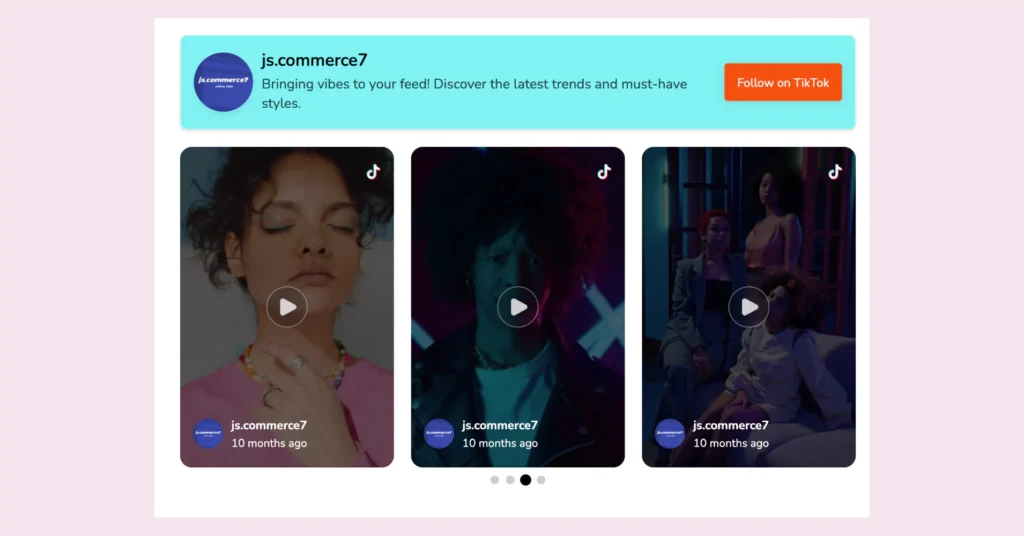
6. Collect testimonials from your industry experts
Testimonial is one of the most powerful e-commerce marketing tools out there right now.
We’ve made a strong statement over there, and let us tell you why.
In the digital world, lack of empathy and trust are the two most adverse factors for e-commerce.
After all, buyers stay behind the screen, but there is no physical store to touch the product. Naturally, they become more cautious about the quality.
Testimonial advertising helps bridge this gap by showcasing industry experts evaluating your product or service from an analytical perspective.
People always trust expert opinion more than the brand talking about itself. No matter how well your website describes your business, your prospects will still doubt whether you are the real deal.
7. Add social chat widgets to provide fast and personalized customer support
Communication is the key. In e-commerce, communication is far more important than convincing a customer. It’s about building a long-term relationship.
In old times, phone calls or emails were the primary communication medium. But are they still a convincing communication medium? Do you use emails to talk with your best friend?
Of course not. Time has changed. There are tons of chatting platforms out there, and people actually love texting through them. Emails and phone calls are being labelled as formal communication.
If you truly want to get that close to your audience where you can listen to them, understand them, answer their queries, and build a long-term relationship, you must consider adding chat widgets to your website.
When your prospects can communicate with you through their preferred communication medium and receive immediate and personalized support, their experience with you will improve. They convert and become your loyal customers.
There are even amazing plugins like WP Social Ninja, which allow you to create chat widgets with 15+ platforms on WordPress websites with a few clicks.
A satisfied customer will likely initiate word-of-mouth marketing on your behalf, resulting in more customers.
Win your customers’ hearts with exceptional features
Discover how WP Social Ninja can assist you in designing outstanding customer experiences.
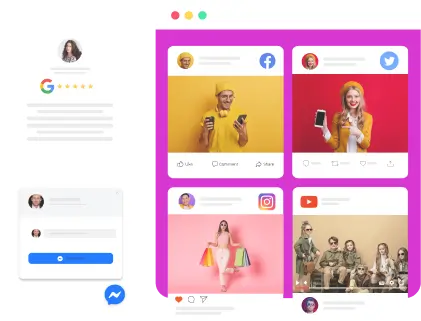
8. Embed business reviews from multiple sources on your website
Do you often wonder what other people think about you as a person?
You may never know the real answers, but you can definitely understand what prospects think about your business through reviews.
Reviews are the king-maker in e-commerce marketing. People trust’ reviews about your business more, regardless of how well-versed your content is.
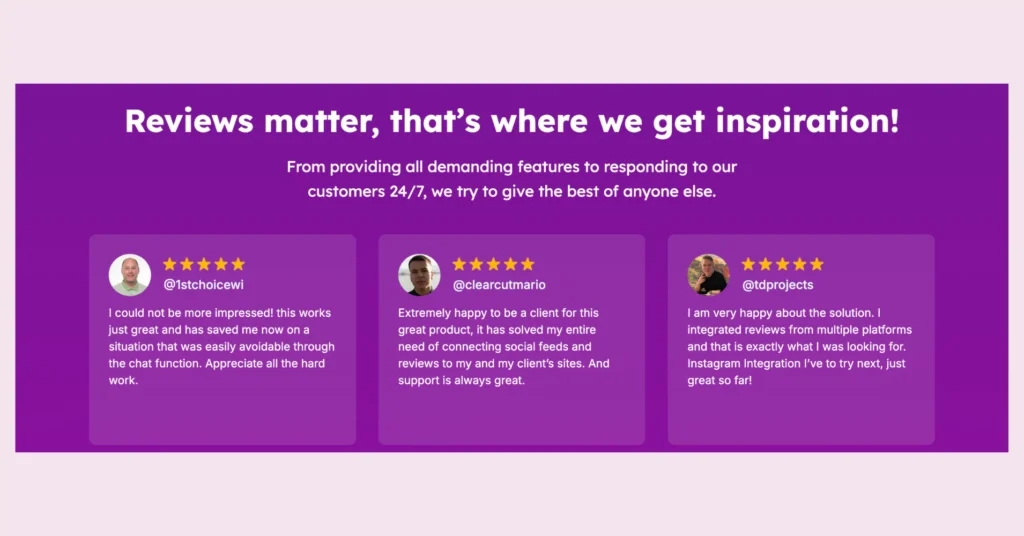
That’s why your business should always be active on different review platforms like Yelp, Google Business Profile, Tripadvisor, Facebook, WooCommerce, AliExpress, Amazon, etc.
And it’s normal that your prospects don’t have the time to visit individual sites to see your reviews, you must display them on your website.
Want to aggregate reviews from multiple platforms to a single place on your WordPress website?
9. Build an organized YouTube marketing strategies
Video content can carry more information than any other content format. Talking about videos, where do you go whenever you need some video guidelines?
Don’t bother answering. It’s YouTube; it’s definitely YouTube. If being the largest video-sharing platform is not enough, YouTube is the second most visited site in the world, right after Google.
The nature of YouTube makes it an ideal place for e-commerce marketing. With the right video marketing tools, you can craft top-notch promotional or educational videos for your YouTube channe
For your e-commerce website marketing, mention your site in your video and write SEO-friendly titles, descriptions, tags, and hashtags that align with your target audience.
Whatever your business goal is, promoting YouTube videos always promises to bring higher ROI for your brand.
Let’s look at some effective YouTube marketing tips:
- Share videos of your employee introduction
- Make behind-the-scenes videos of your business
- Create how-to videos to show your expertise
- Shoot DIY videos to engage your audience
- Start live-streaming occasionally to connect with your audience
Let’s face it—YouTube marketing is an intensely creative field.
We have mentioned some easy ideas to get you started. Feel free to check our article on YouTube video ideas, covering a wide range of video marketing plans.
10. Launch hashtag campaigns and polls on social media
The biggest charm of social media marketing is how it can reach vast audiences within a short time.
The main idea of social media marketing is to connect, communicate, and engage them with your brand.
If you look at the top social platforms, such as Facebook, Instagram, and TikTok, you’ll see how eager people are to share their opinions and follow trends.
As part of your e-commerce marketing plan, you should take advantage of user behaviour. It can be quite easy.
You can create polls in different Facebook groups where your target audience might belong to collect insightful information about your industry and have an idea about customer expectations and their pain points.
You can also add poll stickers to your Instagram Stories. Stories are a great way to increase your Instagram followers, and more followers raise conversion rates over time.
Hashtags are one of the best ways to gain popularity traction and go viral. You can popularize a hashtag, and users will do the marketing for you.
Hashtag campaigns are the best way to generate user-generated content. Take the #ShareACoke campaign from Coca-Cola as an example of how people went mad about this campaign.
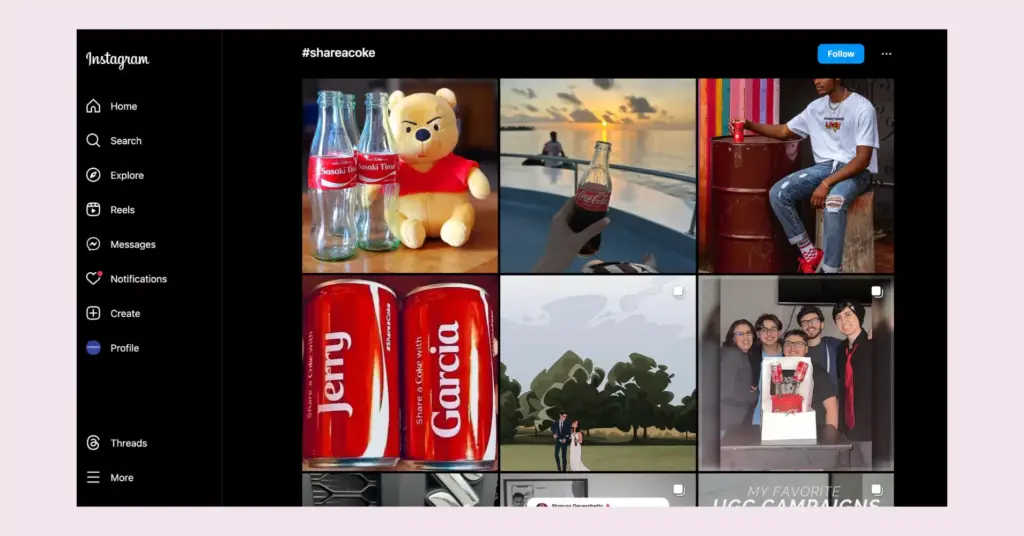
11. Host engaging contests and offer giveaways on your social handles
Why do you think people love spending time on social media?
It’s the vibe, the fun, the excitement the platforms generate that thrives the sense of community and inclusiveness.
Social media marketing is fun. When you add rewards like giveaways, the excitement goes higher, and who doesn’t like getting rewarded once in a while?
So, your e-commerce marketing plan must include launching social media competitions. You can host competitions based on promotional hashtags and offer exciting giveaways to the winners.
When encouraged, users will be your biggest marketers in turn.
Here are some tips for a successful giveaway campaign:
- List products that you wish to give as prizes to the winner. When selecting a product, consider user interest and promotional value.
- Always add a condition for participating in the competition. For example, you can tell users to share your page from their profile or to go to your site and fill out a form.
- Use emails and social media posts to build hype for your competition and encourage participation.
- Send follow-up texts to the participants to encourage them to participate.
12. Launch discount campaigns on special occasions
We all love discounts-period. That’s a fact, a universal fact. If you have written your e-commerce marketing ideas on paper, highlight discount campaigns with a marker so you don’t forget.
To make sure that your discount campaign hits the bullseye, wrap it around with special events so that your campaign gets the maximum attention of your prospects.
Discounts around special occasions or events make things more memorable. People usually like to spend money on such occasions, and discount offers give them the final push.
As a brand, it is always important to ensure your customers feel valued. Special offers make your customer feel that you understand their necessity and are here to help. That’s a great psychological comfort.
Take a look at this great Halloween Discount Campaign of WP Social Ninja as an example.
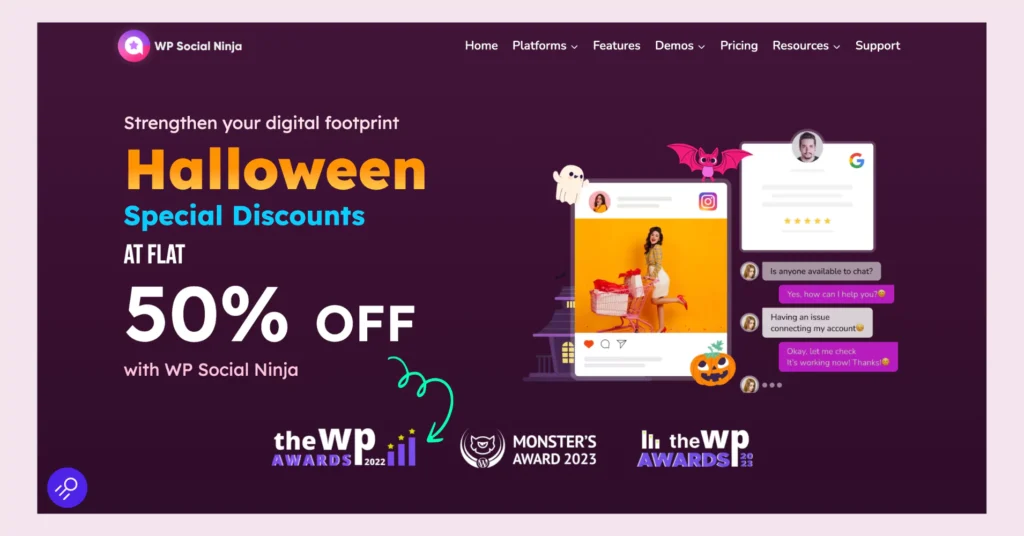
13. Send post-purchase follow-up emails
Build bridges, not walls.
If you think selling your product to a customer ends the relationship, you’re totally wrong, my friend. You will only end up building walls and harming your business in the long run.
That’s why follow-up is important to build bridges that pave the road for future transactions. Sending follow-up emails a few days after the purchase keeps their interest in your brand alive.
It shows that you genuinely care about their success and growth using your products. Post-purchase emails help you understand their product experience, which can, in turn, guide you in building a customer-centric business.
The best practices for e-commerce marketing include follow-up emails asking for their feedback and reviews and requesting content regarding their use case.
14. Automate abandoned shopping cart emails
Abandoned carts can become the biggest red flag for your business. They mean that there is a big issue in your business chain, which may cause the demise of your brand in the future.
That’s why abandoned shopping cart emails are important for diagnosing the gap between you and your customers. They can be a gentle reminder to complete the checkout process, offer assistantship, or recommend similar products.
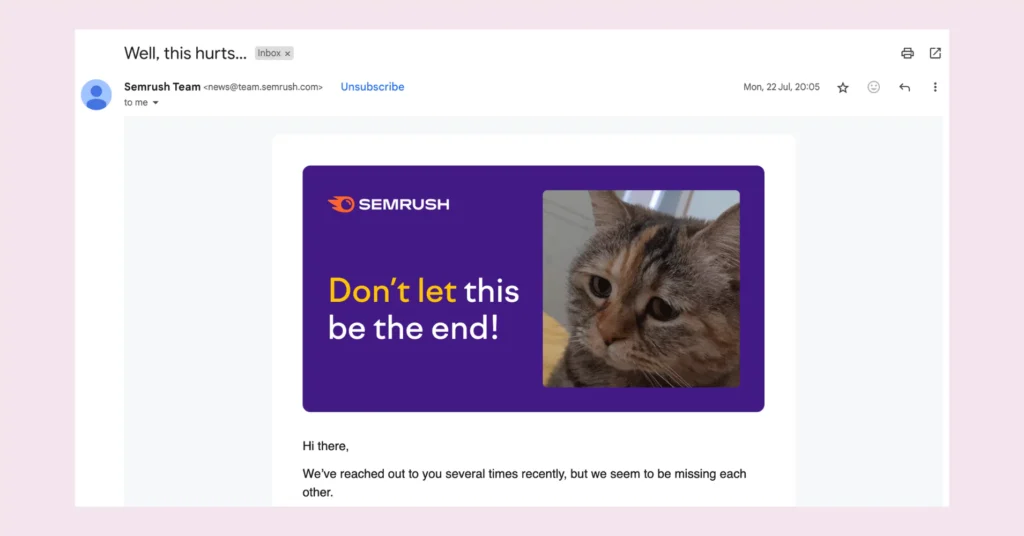
However, manually tracking each abandoned cart and sending emails will only drain you out. So, what can you do?
The solution is simple: email automation. Most reputed email management tools like FluentCRM provide abandoned cart automation features, which makes your e-commerce marketing strategy simpler and more profitable.
15. Ensure secured payment methods
It all comes down to money. All the marketing plans and branding ideas have a sole root purpose- driving money to your account.
The success of your e-commerce marketing strategy heavily depends on how simple, easy, and reliable the payment method you provide.
After all, your customer would not like going through complicated and unreliable procedures to complete their checkout.
You must have a clear idea about the payment channels, their compliance, and availability. It is always a good practice to display prices in multiple currencies and provide a popular medium of transactions.
Your product or service pricing should be compliant with local market conditions, taxes, additional charges, and competitors’ pricing.
16. Upsell your products
“Hey, do you know that the latest version of the wallet you are looking for has handmade and customizable stitchwork?”
That’s an ideal example of upselling. In this approach, you promote a slightly premium version of the original product your customer was considering.
Sometimes, customers don’t know about the premium version or get confused about whether the premium addition fits their needs. Upselling simply does the trick for conversion.
Best tools to implement your marketing strategies
So far, we’ve learned about some top-notch e-commerce marketing strategies. But you will need some tools to help you out.
We will skip the long part and directly introduce you to the tools that are simply the best in their category. Let’s meet them.
| Tool Name | What for | Notable Features | Pricing |
|---|---|---|---|
| WP Social Ninja | Embedding social media feeds, fetching business reviews, creating chat widgets, adding custom testimonials on WordPress | 4+ social feeds, including Facebook, Instagram, YouTube, and TikTok; 10+ review platforms; 15+ chat widgets; custom Testimonials and review forms; Notification popups and more | $44 per year (after discount) |
| FluentCRM | Email automation for WordPress | Drag & drop visual builder with multiple pre-made templates; welcome and follow-up email automation, and abandoned cart triggering automation | $77 per year (after discount) |
| Semrush | Keyword research and content analysis for SEO | Keywords with search intent; competitor analysis based on targeted keywords; advances topic research options based on industry trends | $139.95 per month |
| Fluent Forms | Building data collection forms on WordPress | Drag & drop form builder; multi-step forms for better user experience; conditional logic-based forms; CRM integration; payment collection forms | $47 per year (after discount) |
| Google PageSpeed Insights | Website optimization | Measure the performance of each page on mobile and desktop; provide detailed improvement report for boosting user experience based on real-time data | Free |
| Google Analytics | Website performance measurement | Detailed information about visitor activities and traffic acquisition; purchase behavioural data of the consumers | Free |
| Ninja Tables | Data visualization table builder for WordPress | Drag & drop table builder; conditional formatting for columns and cells; multimedia attachment supported for better visualization and product comparison; wide collection of pre-made table templates | $47 per year (after discount) |
| Canva | Content design | 250k+ free templates; tons of elements and styling features | $55 per year |
| Biteable | Professional-looking videos | Millions of stock images, videos, and animations; user-friendly interface | $180 per year |
| Paymattic | Payment and donation plugin for WordPress | Supports 13 payment gateways, 70+ pre-built templates, 35+ custom input fields | $59 per year (after discount) |
Now, it’s your turn to succeed
That was a long journey. If you have read from the top to here, we might just give you a certification of an expert in e-commerce marketing.
In this article, we tried to cover all aspects of e-commerce marketing, including the top strategies and tools needed to implement them. We are confident that you have learned everything you need to know about e-commerce marketing strategies.
Knowing what will work and how makes a big difference when the world is constantly moving towards virtualization. Hopefully, with the guidance of this article, you will succeed in this changing landscape.
Mashfik Upal Aumy
Aumy is a veteran Digital Marketer at WP Social Ninja, specializing in the WordPress industry. With almost two years of experience, Aumy crafts content that breaks down complex branding theories, product marketing campaigns, and social media tactics in a digestible manner for businesses. While not working, you’ll find him reading books, watching movies, or exploring new places on a bike.

Subscribe To Get
Weekly Email Newsletter
Connect, Customize, and Display Social Feeds, Reviews, and Chat widgets















Leave a Reply